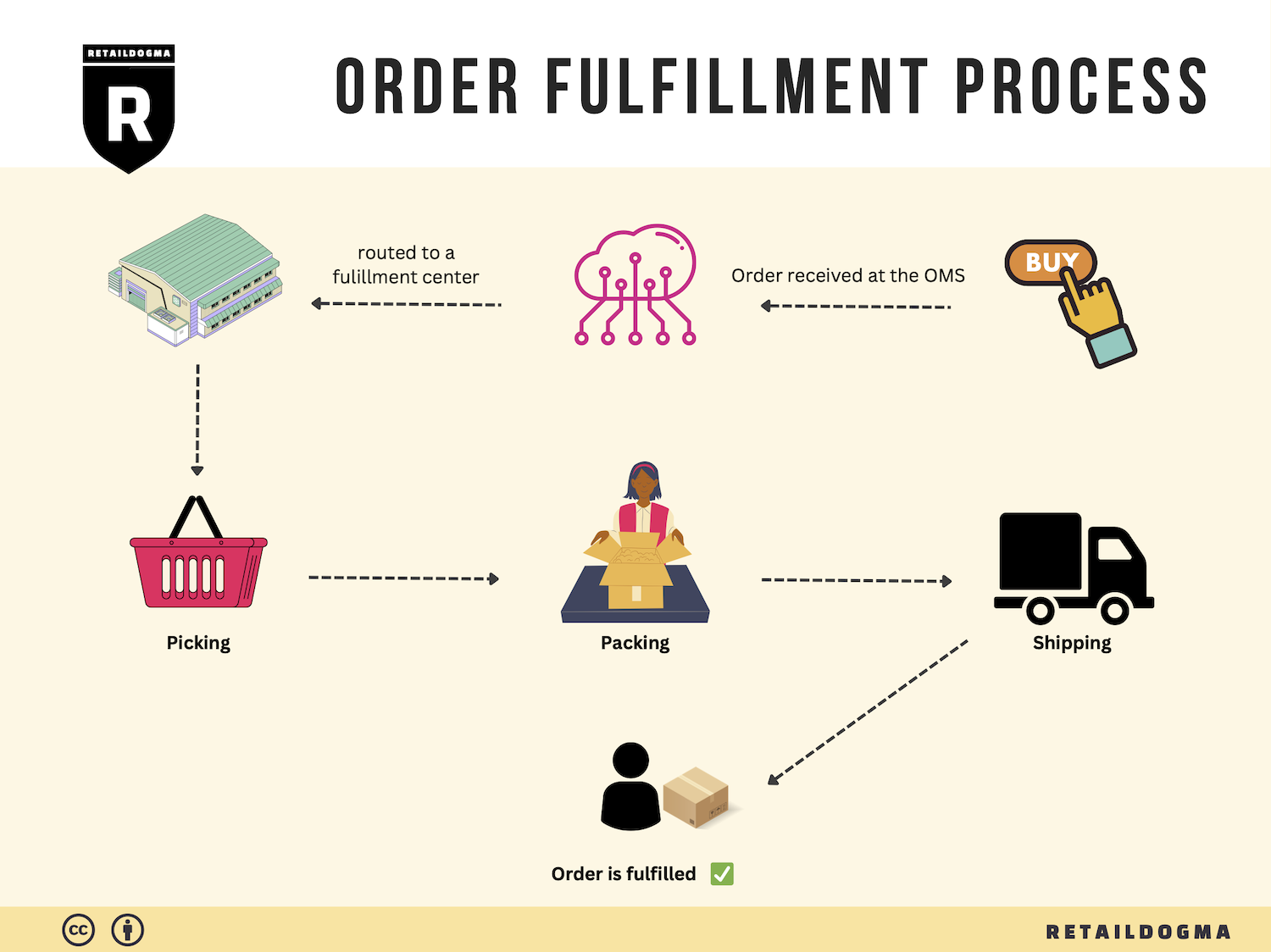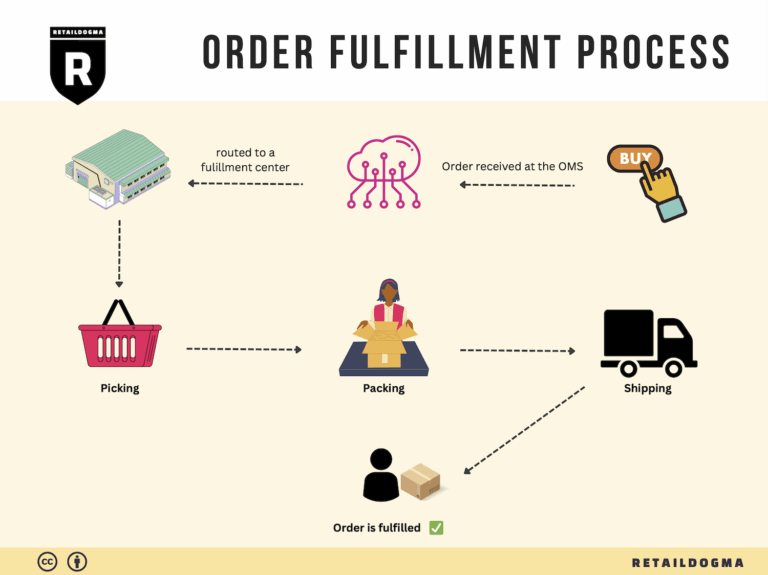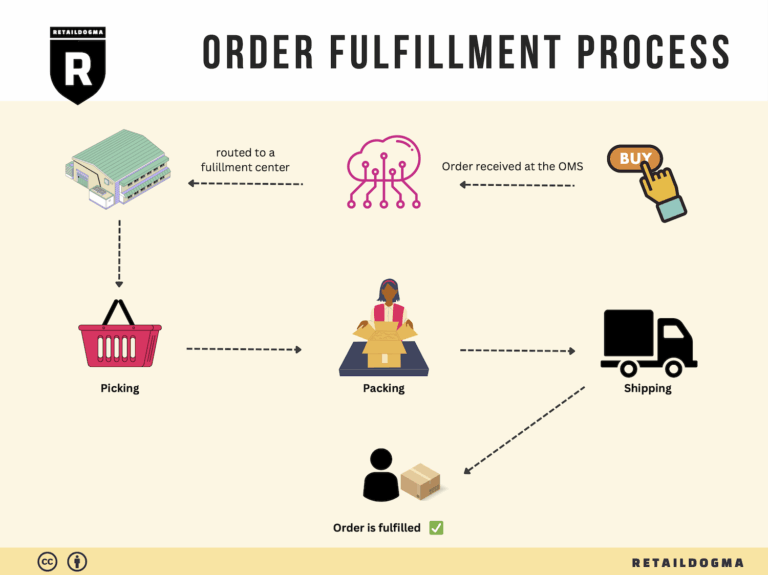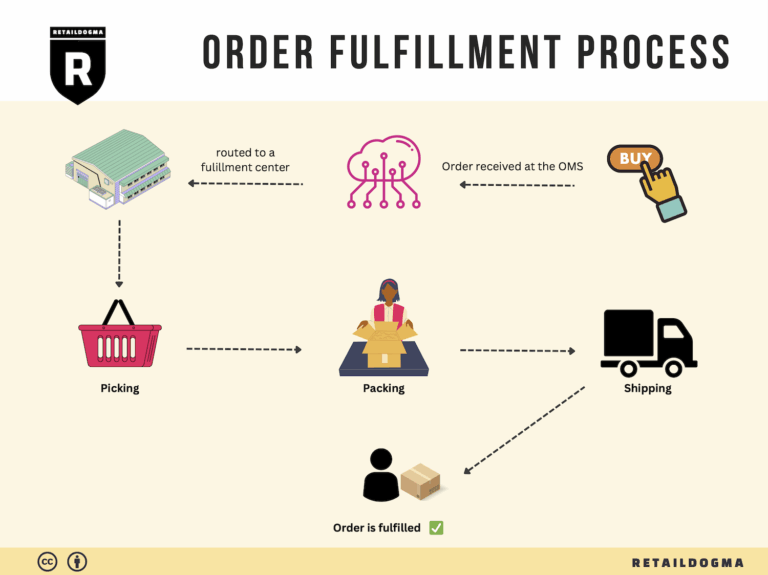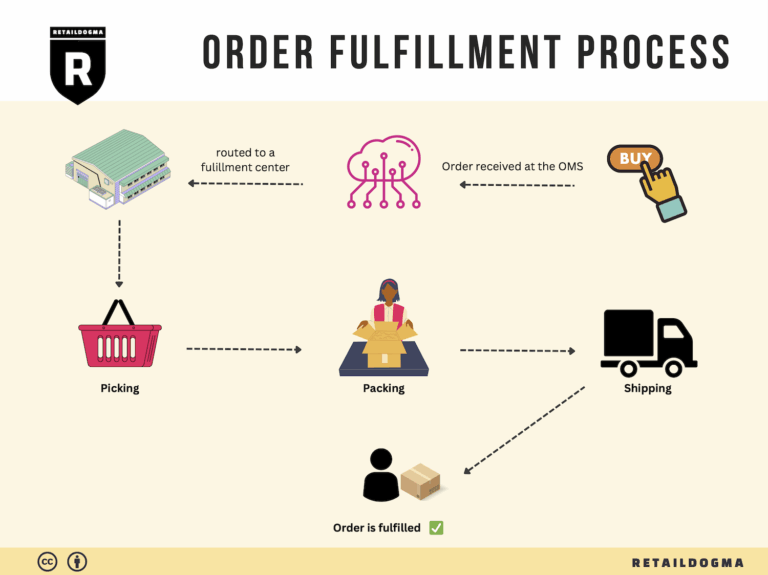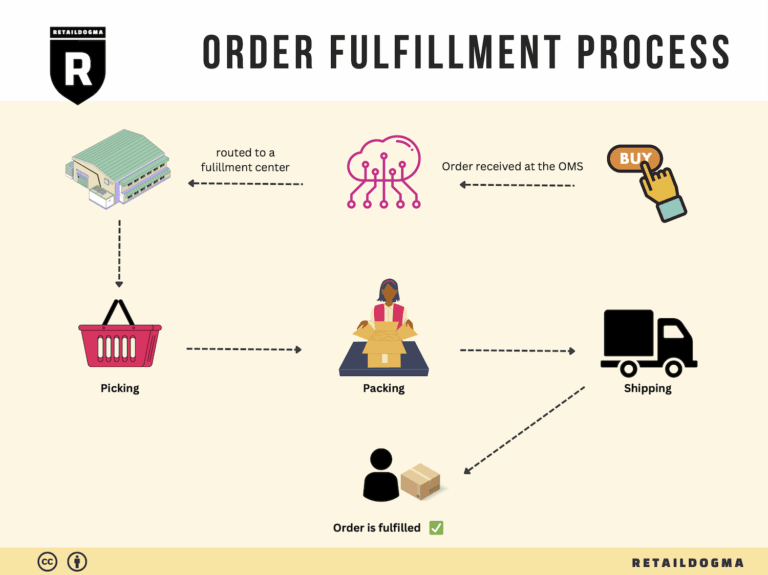How Order Fulfillment Works: A Step-by-Step Guide for Businesses
What is E-commerce Fulfillment? An Introduction for Growing Businesses
As your e-commerce business begins to grow, you may find yourself grappling with the daunting tasks of packing and shipping orders. The thrill of increased sales can quickly turn into a logistical nightmare if you’re overwhelmed with fulfilling orders on your own. This is where e-commerce fulfillment steps in, transforming a complex process into a streamlined operation. Simply put, fulfillment is the entire process of getting a product from your warehouse to your customer’s doorstep.
In today’s fast-paced online retail environment, efficient fulfillment is crucial not only for customer satisfaction but also for your business’s scalability. This guide will delve into the various fulfillment models available to you, including Third-Party Logistics (3PL) and Fulfilled by Amazon (FBA), helping you understand the pros and cons of each. We will explore the core services offered by fulfillment providers, such as inventory management, order processing, packaging, shipping, and returns handling.
Choosing the right fulfillment partner is a critical decision for your business. Factors like shipping speed, pricing structure, and customer support can significantly impact your operations. In this guide, we will provide you with practical tips on how to evaluate potential partners and what questions to ask during the selection process.
Understanding pricing is another key component of e-commerce fulfillment. We will break down the typical costs associated with different fulfillment services, so you can make informed budgeting decisions. By the end of this guide, you’ll be equipped with the knowledge to navigate the complexities of e-commerce fulfillment confidently.
Our goal is to empower you to make smart, strategic decisions regarding your logistics, enabling your business to flourish without the burden of operational chaos. Whether you are a startup just beginning to scale or an established brand looking to optimize your fulfillment processes, this guide serves as your roadmap to success in the ever-evolving landscape of e-commerce.
What You’ll Learn In This Guide
- What is E-commerce Fulfillment? An Introduction for Growing Businesses
- The Order Fulfillment Process: From ‘Buy’ Button to Customer’s Door
- Comparing Fulfillment Models: In-House vs. 3PL vs. Dropshipping
- A Deep Dive into Amazon FBA: Pros, Cons, and Who It’s For
- Core Services Offered by Fulfillment Centers
- How to Choose a Fulfillment Partner: A 6-Point Checklist
- Understanding Fulfillment Pricing: A Breakdown of Common Fees
- Frequently Asked Questions (FAQs) about Fulfillment
- Conclusion: Is Outsourcing Fulfillment the Right Move for Your Business?
- Important Disclaimer
The Order Fulfillment Process: From ‘Buy’ Button to Customer’s Door
1. Receiving Inventory
The order fulfillment process begins with the receiving inventory stage, where products are delivered to the fulfillment center from suppliers or manufacturers. This step is crucial because it sets the foundation for accurate inventory management and order processing. Upon arrival, each product must be checked for quality and quantity against purchase orders to ensure that the correct items have been received.
During this stage, items are assigned a Stock Keeping Unit (SKU), a unique identifier that simplifies inventory tracking. Proper SKU management allows businesses to monitor stock levels in real-time, preventing overstocking or stockouts. Efficient receiving procedures help streamline the entire fulfillment process, ultimately enhancing customer satisfaction by ensuring that products are available when orders are placed.
2. Warehouse Storage
Once inventory has been received and labeled, the next step is warehouse storage. This involves organizing products in a way that maximizes space and facilitates easy access. Effective warehouse management can significantly impact the overall efficiency of the fulfillment process.
Products are typically stored based on various factors, including size, weight, and sales frequency. High-demand items may be placed closer to the packing area to reduce picking time, while slower-moving items can be stored in less accessible locations. Utilizing a Warehouse Management System (WMS) can automate storage and retrieval processes, providing real-time inventory visibility and improving accuracy. Proper storage solutions ensure that items are easy to locate, ultimately speeding up the order fulfillment process and reducing operational costs.
3. Order Picking
The order picking stage involves selecting the correct items from the warehouse to fulfill a customer’s order. This process is vital as it directly affects order accuracy and fulfillment speed. Order pickers use pick lists, which detail the items and quantities needed for each order, to ensure that they gather the correct products.
There are various picking methods, including single order picking, batch picking, and zone picking, each with its own advantages depending on the scale and nature of the business. Implementing an efficient picking strategy can significantly reduce labor costs and minimize errors, leading to a more streamlined operation. By focusing on improving picking efficiency, businesses can enhance their order fulfillment speed and customer satisfaction.
4. Order Packing
Once items have been picked, the next crucial step is order packing. This involves carefully packaging the products to ensure they arrive at the customer’s door in pristine condition. Proper packing is essential for protecting items during transit and can also enhance the customer experience through thoughtful presentation.
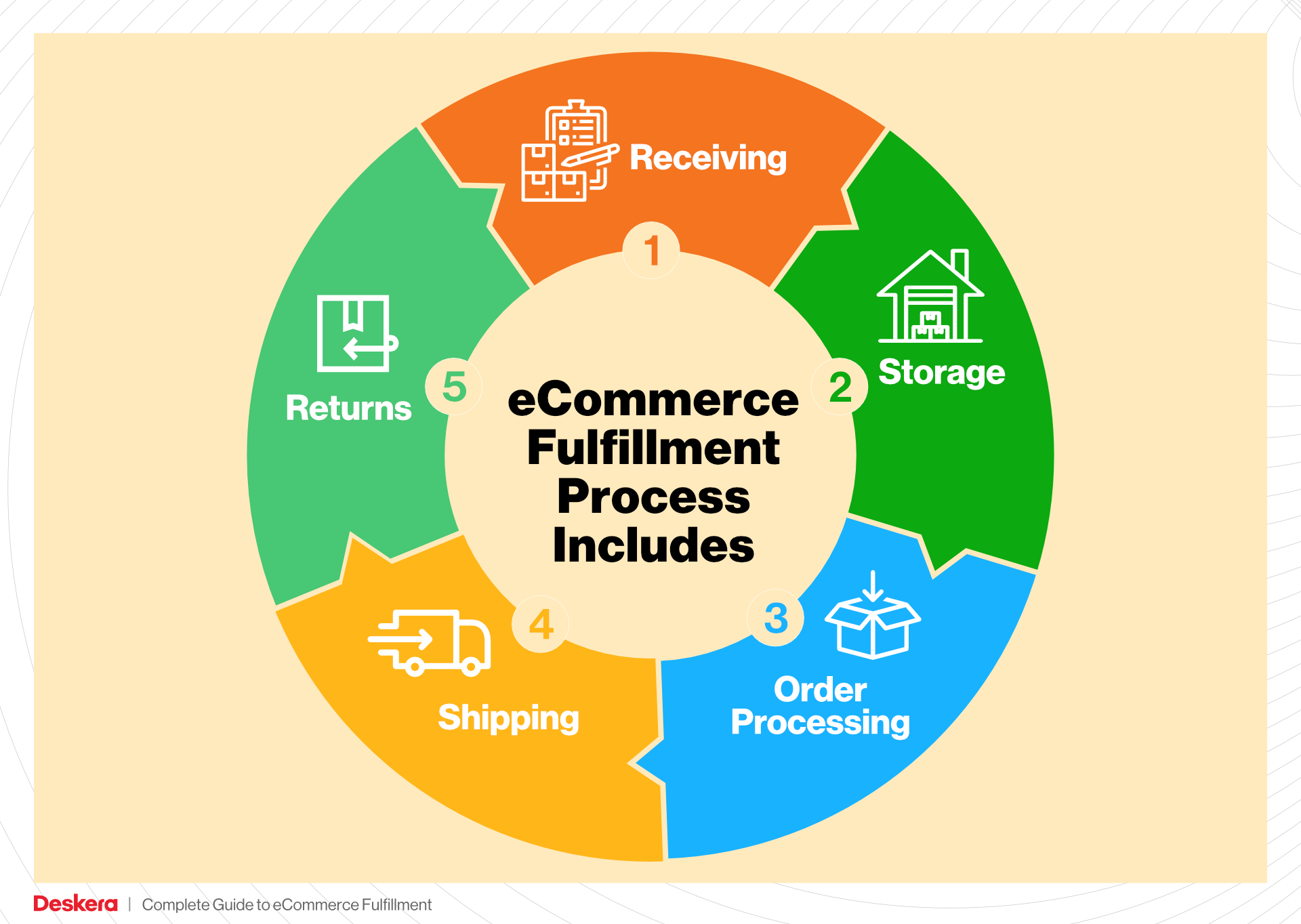
During this stage, businesses should consider using packing slips—documents that accompany the order and provide details about the items included. Additionally, using appropriate packaging materials and techniques can prevent damage and reduce shipping costs. Moreover, businesses can leverage branded packaging to reinforce their brand identity and create a memorable unboxing experience for customers. Efficient packing processes not only reduce the likelihood of returns due to damage but also contribute to positive customer reviews and repeat business.
5. Shipping & Delivery
The final step in the order fulfillment process is shipping and delivery, where packed orders are dispatched to customers. This stage is critical as it directly impacts customer satisfaction and overall business reputation. The shipping method chosen can affect delivery speed, cost, and reliability, all of which are key factors for customers.
Utilizing a Shipping Management System (SMS) can streamline this process by providing real-time tracking information and automating label creation. Businesses should also consider offering multiple shipping options to cater to varying customer needs. Once orders are shipped, providing tracking information helps keep customers informed, reducing anxiety and enhancing their overall shopping experience. Efficient shipping and delivery processes are essential for fostering customer loyalty and encouraging repeat purchases.
In conclusion, mastering each step of the order fulfillment process—from receiving inventory to shipping—enables e-commerce businesses to operate efficiently, reduce costs, and improve customer satisfaction. By investing in the right systems and practices, businesses can scale their operations effectively and maintain a competitive edge in the marketplace.
Comparing Fulfillment Models: In-House vs. 3PL vs. Dropshipping
Fulfillment Model Comparison
| Model | Who Handles Inventory | Best For (Business Stage) | Key Advantage | Key Disadvantage |
|---|---|---|---|---|
| In-House Fulfillment | The business itself | Startups, established brands | Complete control over inventory and processes | High overhead costs and resource demands |
| Third-Party Logistics (3PL) | 3PL provider | Scaling businesses | Cost-effective, scalable, and time-saving | Less control over inventory and shipping |
| Dropshipping | Supplier | New businesses, niche markets | Low upfront costs and inventory risk | Longer shipping times and potential quality issues |
In-House Fulfillment
In-house fulfillment involves managing your own warehousing, inventory, order processing, and shipping operations. This model is often favored by startups and established brands that have the resources to maintain control over their fulfillment processes. The primary advantage of in-house fulfillment is the complete control it offers over inventory management, order processing, and customer experience. Businesses can tailor their operations to meet specific needs, implement their own quality control measures, and ensure that every aspect aligns with their brand identity.
However, the in-house model comes with significant disadvantages. Managing your own fulfillment operations demands substantial overhead costs, including staffing, warehousing, and technology investments. This can strain the resources of smaller businesses or startups. Additionally, as order volume grows, the complexity of managing logistics increases, which can hinder scalability. Therefore, while in-house fulfillment can be beneficial for certain stages, businesses must weigh these factors carefully to avoid operational inefficiencies.
Third-Party Logistics (3PL)
Third-party logistics (3PL) providers, like Meest, offer a comprehensive range of services that include inventory management, order processing, packaging, shipping, and returns handling. This model is particularly beneficial for businesses that are scaling up and need to streamline their operations without the burden of managing logistics themselves. By outsourcing these functions to a 3PL provider, businesses can focus on core activities such as product development and marketing, while leveraging the expertise of logistics specialists.
The key advantages of working with a 3PL provider include reduced shipping times due to strategically located fulfillment centers, lower operational costs since businesses do not need to invest in warehousing and staff, and enhanced inventory accuracy through advanced technology and real-time reporting. However, a notable disadvantage is the loss of direct control over inventory and shipping processes. Businesses must rely on their 3PL partner to maintain standards and ensure timely delivery, which can be a risk if the provider does not meet expectations. Thus, while 3PL can facilitate growth and efficiency, choosing the right partner is crucial for success.
Dropshipping
Dropshipping is a fulfillment model in which a retailer does not hold inventory but instead partners with suppliers who ship products directly to customers. This model is ideal for new businesses or those operating in niche markets, as it requires minimal upfront investment and eliminates the need for warehousing and inventory management. Retailers can offer a wide range of products without the financial burden associated with holding stock.
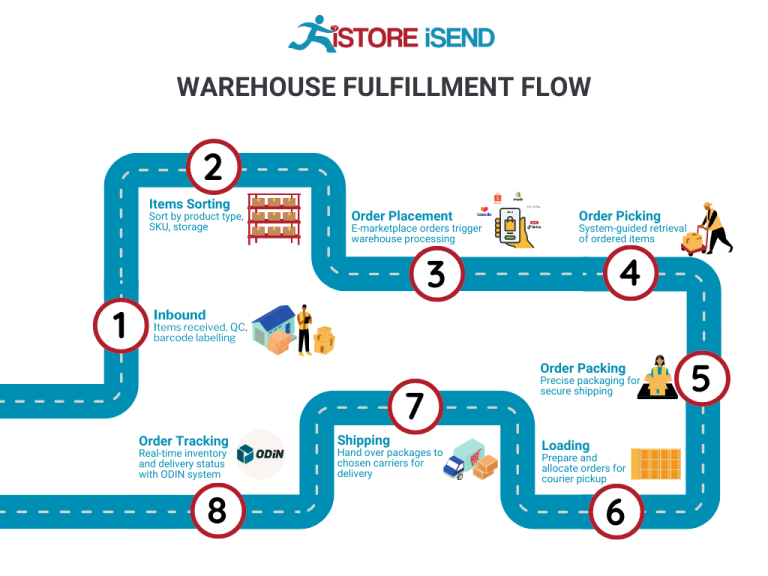
The primary advantage of dropshipping is the low barrier to entry, allowing entrepreneurs to start a business with little capital. Additionally, it offers flexibility in product offerings and reduces the risks associated with unsold inventory. However, dropshipping also has significant drawbacks. Shipping times can be longer since products may come from various suppliers, and there is less control over product quality and fulfillment processes. This can lead to customer dissatisfaction if products do not meet expectations. Moreover, the competitive nature of dropshipping can drive down margins, making it essential for businesses to differentiate themselves through marketing and customer service.
Conclusion
Each fulfillment model presents unique advantages and challenges, making it essential for e-commerce businesses to choose the one that aligns with their goals, resources, and growth stages. In-house fulfillment offers control but at a high cost, 3PL provides efficiency and scalability, while dropshipping minimizes risk but can compromise quality and speed. By carefully evaluating these factors, business owners can make informed decisions that will facilitate growth and enhance customer satisfaction.
A Deep Dive into Amazon FBA: Pros, Cons, and Who It’s For
Understanding Fulfillment by Amazon (FBA)
Fulfillment by Amazon (FBA) is a service provided by Amazon that allows e-commerce sellers to store their products in Amazon’s fulfillment centers. Amazon then takes care of storage, packaging, and shipping of these products, as well as handling customer service and returns. This model has gained popularity among e-commerce businesses due to its potential to scale operations quickly and efficiently.
How FBA Works
The process of FBA can be broken down into several key steps:
-
Setup: Sellers create an Amazon Seller account and register for the FBA service. During setup, sellers can choose which products they want to fulfill through Amazon.
-
Shipping Inventory: Sellers ship their products to Amazon’s fulfillment centers. Amazon provides guidelines on how to package and label products before sending them to ensure efficient processing.
-
Storage: Once the inventory arrives at the fulfillment center, Amazon stores it until an order is placed. Sellers can monitor their inventory levels through the Seller Central dashboard.
-
Order Processing: When a customer places an order, Amazon picks, packs, and ships the product on behalf of the seller. Orders are typically shipped within one business day, and customers receive tracking information.
-
Customer Service and Returns: Amazon handles all customer service inquiries related to FBA orders, including returns and refunds, which significantly reduces the operational burden on sellers.

Pros of Fulfillment by Amazon (FBA)
-
Prime Eligibility: One of the most significant advantages of using FBA is that products become eligible for Amazon Prime. This feature increases visibility and attractiveness to millions of Prime members who prefer fast, free shipping.
-
Customer Trust: Leveraging Amazon’s established brand and customer service infrastructure enhances seller credibility. Customers are more likely to purchase from sellers using FBA due to Amazon’s reputation for quality service.
-
Multi-Channel Fulfillment: FBA isn’t limited to Amazon sales. Sellers can use FBA to fulfill orders from other sales channels, such as their own websites or other marketplaces, making it a versatile solution for managing inventory and logistics.
-
Scalability: FBA allows sellers to scale their business without the need for extensive warehousing or logistics management. As sales increase, Amazon can handle the growing order volume seamlessly.
-
Time Savings: By outsourcing fulfillment to Amazon, sellers can focus on other critical areas of their business, such as product development, marketing, and customer relationship management.
Cons of Fulfillment by Amazon (FBA)
-
High Fees: While FBA offers numerous benefits, it comes with significant costs. Sellers incur fees for storage, fulfillment, and optional services, which can add up quickly, particularly for low-margin products.
-
Strict Inventory Rules: Amazon has strict inventory management policies that sellers must adhere to. This includes requirements for labeling, packaging, and maintaining acceptable stock levels. Non-compliance can lead to penalties or even account suspension.
-
Commingling Risks: FBA products from multiple sellers may be commingled in the same inventory pool. This means that sellers may not always know which specific units of their products are being shipped, potentially leading to issues with counterfeit goods or quality control.
-
Limited Control: When using FBA, sellers relinquish control over the fulfillment process. This can be a concern if a seller has specific packaging or branding requirements that Amazon does not accommodate.
-
Returns Management: While Amazon handles returns, the process can be less favorable for sellers. Returned items are often restocked without inspection, increasing the risk of receiving damaged or unsellable products back into inventory.
Who is FBA Best For?
Fulfillment by Amazon is an excellent option for various types of e-commerce businesses, especially those that fit the following profiles:
-
New Sellers: Entrepreneurs who are just starting out and want to tap into Amazon’s vast customer base without investing in logistics and warehousing can benefit from FBA.
-
Businesses with High Sales Volume: Companies that experience a high volume of sales and need to scale quickly will find FBA’s logistics capabilities invaluable.
-
Brands Looking for Visibility: Sellers aiming to increase their brand visibility and credibility should consider FBA, especially if they want to take advantage of Amazon Prime’s extensive reach.
-
Sellers with Limited Resources: Smaller businesses or solo entrepreneurs who lack the resources to manage inventory, shipping, and customer service can focus their efforts on growth while Amazon handles fulfillment.
-
Multi-Channel Retailers: Businesses selling across multiple platforms can streamline their operations through FBA, allowing them to consolidate logistics under one umbrella while still reaching diverse customer bases.
In conclusion, while Fulfillment by Amazon offers numerous advantages, it also presents challenges that sellers must carefully consider. By understanding these pros and cons, e-commerce businesses can make informed decisions about whether FBA aligns with their growth strategies and operational capabilities.
Core Services Offered by Fulfillment Centers
Inventory Management & Warehousing
Inventory management and warehousing are foundational services provided by fulfillment centers that play a crucial role in the success of e-commerce businesses. This service encompasses the systematic control of inventory levels, ensuring that products are stored efficiently and accurately tracked.
What It Is:
Fulfillment centers utilize sophisticated inventory management systems to receive, store, and track products. This includes accepting shipments from suppliers, labeling items for easy identification, and organizing products in a manner that facilitates quick retrieval. Warehousing services also involve maintaining optimal stock levels based on demand forecasts and real-time analytics.
Benefits to E-commerce Businesses:
1. Increased Efficiency: By outsourcing inventory management, e-commerce businesses can significantly reduce the time spent on tracking and managing stock. This allows teams to focus on core activities like marketing and customer service.
2. Cost Savings: Using a fulfillment center eliminates the need for in-house warehousing, which can incur high overhead costs. Businesses only pay for the space and services they actually use.
3. Real-Time Insights: Many fulfillment centers offer real-time inventory reporting, enabling businesses to make informed decisions about stock levels, reorder points, and sales trends.
4. Scalability: As businesses grow, their inventory needs change. Fulfillment centers can quickly adjust storage solutions, allowing businesses to scale operations without the need for significant capital investment.
Pick and Pack Services
Pick and pack services refer to the process of selecting ordered items from inventory and packaging them for shipment. This service is critical for maintaining speed and accuracy in order fulfillment.
What It Is:
Once an order is received, fulfillment center staff “pick” the items from the warehouse shelves, then “pack” them into boxes or envelopes for delivery. This process often includes quality checks to ensure that the correct items are shipped and that they meet the required standards for packaging.
Benefits to E-commerce Businesses:
1. Faster Order Processing: Fulfillment centers are equipped with systems and staff trained to handle large volumes of orders quickly, significantly reducing lead times and improving customer satisfaction.
2. Error Reduction: Automated systems and standardized processes in fulfillment centers help minimize picking errors, which can lead to costly returns and dissatisfied customers.
3. Customized Packaging: Many fulfillment centers offer customizable packaging options, which can enhance the unboxing experience for customers and reinforce brand identity.
4. Scalability During Peak Seasons: During peak shopping seasons, fulfillment centers can manage increased order volumes without straining your existing resources, ensuring that customer expectations for timely delivery are met.
Kitting and Assembly
Kitting and assembly services involve combining multiple products into a single package or kit, which is often necessary for promotional items or product bundles. This service is especially beneficial for businesses that want to offer curated experiences to their customers.
What It Is:
Kitting involves assembling different products into a single kit or package before shipping. This could include everything from bundling complementary items together to assembling products that require some level of construction or configuration.
Benefits to E-commerce Businesses:
1. Enhanced Customer Experience: Kitting allows businesses to create unique product offerings that can attract customers and encourage larger purchases, thereby increasing average order value.
2. Streamlined Operations: By outsourcing kitting and assembly, businesses can reduce the complexities of managing multiple SKUs and streamline their fulfillment processes.
3. Reduced Shipping Costs: By shipping multiple items as a single package, businesses can often reduce shipping costs, which can be a significant factor in overall profitability.
4. Flexibility for Promotions: Kitting services allow businesses to quickly create promotional bundles or seasonal offerings without the need to invest in additional inventory or logistics resources.
Returns Management (Reverse Logistics)
Returns management, or reverse logistics, is a vital service for e-commerce businesses, as it deals with the return of products from customers back to the fulfillment center. Efficient returns management can significantly impact customer satisfaction and operational efficiency.
What It Is:
This service includes handling the entire process of product returns, from receiving returned items to assessing their condition, restocking, or processing them for resale. Fulfillment centers often provide a streamlined process for returns, including automated systems that notify businesses of returns and their status.
Benefits to E-commerce Businesses:
1. Improved Customer Satisfaction: A hassle-free return process enhances customer trust and satisfaction, making them more likely to shop again.
2. Data Insights: Returns management systems often provide valuable data on why products are returned, helping businesses identify trends and improve product offerings or descriptions.
3. Cost Efficiency: By outsourcing returns management, businesses can reduce the labor and overhead costs associated with processing returns in-house.
4. Inventory Control: Efficient returns management ensures that returned items are quickly assessed and restocked, helping maintain accurate inventory levels and reducing losses from unsold returns.
In conclusion, leveraging the core services offered by fulfillment centers allows e-commerce businesses to streamline their operations, enhance customer experiences, and focus on growth. Each service—inventory management, pick and pack, kitting, and returns management—plays a vital role in creating an efficient and effective fulfillment strategy, ultimately leading to increased sales and customer loyalty.
How to Choose a Fulfillment Partner: A 6-Point Checklist
Location & Warehouse Network
Importance: The geographical location of your fulfillment partner’s warehouses directly impacts shipping times and costs. A partner with strategically placed warehouses can significantly reduce delivery times to your customers, which is critical in today’s e-commerce landscape where fast shipping is often expected.
Questions to Ask:
– Where are your warehouses located, and how does that affect shipping to my primary customer base?
– Do you have multiple fulfillment centers to ensure faster delivery across different regions?
– What is your average shipping time from your warehouses to major markets?
– Can you accommodate international shipping, and what are the associated costs?
Technology & Integrations
Importance: The technology that a fulfillment partner uses can streamline your operations, enhance order accuracy, and provide real-time visibility into inventory. A partner that offers robust technology and integrations with your existing e-commerce platforms can help you manage your logistics more efficiently.
Questions to Ask:
– What inventory management system do you use, and how does it integrate with my e-commerce platform (e.g., Shopify, WooCommerce, Amazon)?
– Can you provide real-time inventory reporting, and how frequently is this data updated?
– What are the capabilities for order tracking, and can I provide tracking information to my customers?
– Do you offer any APIs for custom integrations, and how do you handle data security?
Specializations (e.g., Cold Storage, Oversized Items)
Importance: Depending on your product offerings, you may require specialized storage and handling. If you sell perishable goods, for example, cold storage capabilities are essential. Similarly, if you deal with oversized items, ensuring your partner can accommodate those needs is crucial.
Questions to Ask:
– What types of specialized storage do you offer (e.g., cold storage, hazardous materials)?
– Are there additional fees associated with handling specialized items?
– How do you ensure compliance with regulations regarding specialized products?
– Can you provide examples of how you have successfully handled similar products for other clients?
Scalability & Capacity
Importance: As your business grows, your fulfillment partner should be able to scale operations to meet increased demand without sacrificing service quality. Understanding their capacity to handle fluctuations in order volume is essential for planning your growth strategy.
Questions to Ask:
– What is your current capacity for handling orders, and how flexible is that capacity during peak seasons?
– How quickly can you scale operations if my order volume increases?
– Have you handled seasonal surges for other clients, and what strategies did you employ?
– Are there limitations on the types or volumes of products you can manage?
Pricing and Contracts
Importance: Understanding the pricing structure and contract terms is crucial to avoid unexpected costs and to ensure that your partnership is financially viable. Transparent pricing will help you project costs more accurately and assess the overall value of the service.
Questions to Ask:
– What is your pricing model (e.g., flat fee, per order, storage fees)?
– Are there any hidden fees I should be aware of (e.g., for returns, packaging, or additional services)?
– What are the terms of the contract, and is there flexibility for renegotiation as my needs change?
– Can you provide a detailed breakdown of all costs associated with your services?
Customer Support & Reviews
Importance: Excellent customer support is vital for resolving issues quickly and maintaining smooth operations. Additionally, checking reviews and testimonials from other businesses can provide insight into the partner’s reliability and service quality.
Questions to Ask:
– What customer support services do you offer (e.g., dedicated account manager, 24/7 support)?
– How do you handle issues or disputes that may arise during the fulfillment process?
– Can you provide references from current or past clients, and what are their experiences with your services?
– How do you measure customer satisfaction, and can you share any metrics or feedback?
Conclusion
Choosing the right fulfillment partner is a strategic decision that can significantly impact your e-commerce business’s success. By using this checklist, you can evaluate potential 3PL partners systematically, ensuring they align with your operational needs and business goals. Taking the time to ask these critical questions will enable you to make an informed decision, paving the way for efficient logistics and satisfied customers.
Understanding Fulfillment Pricing: A Breakdown of Common Fees
Initial Setup Fees
When partnering with a fulfillment provider, one of the first costs you might encounter is the initial setup fee. This fee typically covers the costs associated with establishing your account, integrating your systems, and customizing the setup to fit your specific business needs.
How It’s Calculated:
The setup fee can vary widely based on the complexity of your requirements. For instance, if you need extensive integration with multiple sales channels or special handling instructions for your products, the setup fee may be higher. Generally, this fee is a one-time charge, and some providers, like Meest, may offer free account setup as part of their promotional packages.
Receiving Fees
Receiving fees are incurred when your inventory is delivered to the fulfillment center. This fee covers the labor and resources needed to unload, inspect, and store your products. It’s essential for ensuring that your inventory is accurately accounted for and properly organized in the warehouse.
How It’s Calculated:
Receiving fees can be charged per pallet, per box, or based on the total weight of the shipment. Some fulfillment centers may also charge additional fees if your products require special handling or if the volume exceeds a certain threshold. Understanding the specifics of how these fees are structured can help you plan your inventory shipments more effectively.
Storage Fees (per pallet/bin)
Once your products are in the warehouse, you will incur storage fees based on the space they occupy. This is typically calculated on a per-pallet or per-bin basis, depending on how your products are stored.
How It’s Calculated:
Storage fees are usually assessed monthly and can vary by the size of the space your products occupy. For example, if your products require a full pallet of space, you may pay a flat rate per pallet per month. Providers may also offer tiered pricing based on the volume of inventory you store, which can help you save costs as you scale.
Pick & Pack Fees (per item/order)
Pick and pack fees are charged for the process of retrieving items from storage, packing them for shipment, and preparing them for delivery. This is a critical aspect of the fulfillment process and can significantly impact your overall costs.
How It’s Calculated:
These fees are often charged per item or per order. For example, if a customer orders three different items, you may incur a pick fee for each item plus a packing fee for the entire order. Some providers have a minimum charge per order, which means even single-item orders will incur a base fee. It’s vital to clarify these details with your provider to understand how they calculate these fees based on your typical order sizes.
Shipping Fees
Shipping fees cover the cost of transporting the packaged orders to your customers. This is one of the most variable costs in the fulfillment process and can be influenced by factors such as shipping speed, destination, and package weight.
How It’s Calculated:
Shipping fees are typically based on weight and dimensions of the package, as well as the shipping method selected (e.g., standard, expedited, international). Many fulfillment centers have partnerships with carriers, which can lead to discounted rates for their clients. When evaluating shipping options, it’s beneficial to assess whether the fulfillment provider offers flat-rate shipping or calculated rates based on the carrier’s pricing.
Tips for Getting an Accurate Quote
-
Be Transparent About Your Needs: When requesting a quote, provide detailed information about your expected order volume, types of products, and any special handling requirements. This allows the provider to give you a more accurate estimate.
-
Request Itemized Pricing: Ask for a breakdown of all potential fees. This should include setup, receiving, storage, pick & pack, and shipping fees. Understanding each component will help you avoid unexpected costs.
-
Inquire About Discounts: Many fulfillment providers offer discounts for higher volumes or longer-term contracts. Make sure to ask about any available options that could reduce your overall costs.
-
Consider Additional Services: If your business requires value-added services such as returns processing, custom packaging, or kitting, ensure these are included in your quote.
-
Review Terms and Conditions: Carefully read the terms associated with the fees. Look for any hidden charges or conditions that might affect your pricing.
By understanding these common fulfillment pricing models and following these tips, you can make informed decisions that will help scale your e-commerce operations efficiently and cost-effectively.
Frequently Asked Questions (FAQs) about Fulfillment
1. What is Meest Fulfillment?
Meest Fulfillment offers third-party logistics (3PL) services tailored for e-commerce businesses. This includes comprehensive support for order processing, storage, packaging, shipping, and managing returns, allowing businesses to focus on growth while ensuring efficient and accurate order fulfillment.
2. What is a 3PL?
A third-party logistics (3PL) provider is a company that manages logistics services for other businesses. This can encompass warehousing, inventory management, order processing, and transportation. Utilizing a 3PL allows e-commerce companies to streamline their operations, reduce costs, and enhance service levels without needing to manage logistics in-house.
3. How does Meest Fulfillment integrate with my e-commerce platform?
Meest Fulfillment seamlessly integrates with over 150 marketplaces and e-commerce platforms, including Shopify, WooCommerce, and Amazon. This integration facilitates real-time inventory management and order processing, ensuring a smooth flow of information between your sales channels and the fulfillment center.
4. How much do fulfillment services cost?
The cost of fulfillment services can vary based on several factors, including storage fees, order processing fees, and shipping costs. Meest Fulfillment offers transparent pricing with no hidden fees, and you can request a quote tailored to your business’s specific needs by filling out a quick form on their website.
5. What’s the difference between a warehouse and a fulfillment center?
While both warehouses and fulfillment centers are used for storage, the key difference lies in their functions. A warehouse primarily focuses on storing inventory, whereas a fulfillment center is designed for the complete order fulfillment process, including order processing, packaging, and shipping to customers. Fulfillment centers are equipped to handle high volumes of orders and streamline the logistics process.
6. How quickly can orders be processed and shipped?
Meest Fulfillment ensures that orders are processed within one day and delivered to customers within 2 to 5 days. This quick turnaround is essential for maintaining customer satisfaction in the competitive e-commerce landscape.
7. What services does Meest Fulfillment provide for returns?
Meest Fulfillment offers a comprehensive returns management service, which includes processing returns and providing a photo service for returned items. This helps businesses manage their return logistics efficiently while keeping customers informed about the status of their returns.
8. How does Meest Fulfillment ensure inventory accuracy?
Meest Fulfillment employs advanced inventory management software that provides real-time inventory reporting. This technology minimizes stock discrepancies and errors, ensuring that businesses have an accurate view of their inventory levels at all times.
9. Can international sellers utilize Meest Fulfillment services?
Yes, Meest Fulfillment supports international sellers looking to enter the U.S. market. They facilitate the receipt of goods from any country and offer logistics expertise for seamless order fulfillment within the United States.
10. What support can I expect from Meest Fulfillment?
When partnering with Meest Fulfillment, you will receive dedicated support, including a dedicated account manager who speaks your native language. This ensures effective communication and assistance tailored to your business’s unique needs, helping you navigate the fulfillment process with ease.
Conclusion: Is Outsourcing Fulfillment the Right Move for Your Business?
Evaluating the Benefits of Outsourcing Fulfillment
Outsourcing fulfillment can be a transformative decision for e-commerce businesses, offering several compelling advantages that can drive growth and enhance operational efficiency. First and foremost, utilizing a fulfillment service allows you to save precious time. By delegating the complexities of inventory management, order processing, packaging, and shipping to a trusted partner, you can redirect your focus to core business activities such as product development, marketing, and customer engagement.
Additionally, partnering with a fulfillment provider offers scalability. As your business grows, so do your logistics needs. A proficient fulfillment partner can seamlessly adapt to fluctuations in order volume, whether you experience seasonal spikes or steady growth. This flexibility ensures that you can meet customer expectations without the burden of expanding your own infrastructure prematurely.
Moreover, leveraging the expertise of a fulfillment service can significantly enhance your operational capabilities. Fulfillment providers bring specialized knowledge in logistics, compliance, and technology integration, which can improve accuracy, speed, and customer satisfaction. For example, services like real-time inventory reporting and expedited shipping can elevate your business’s performance while minimizing costly errors.
Choosing the Right Partner for Growth
However, the key to reaping these benefits lies in selecting the right fulfillment partner. Look for providers that align with your business goals, offer transparent pricing, and demonstrate a strong track record in customer service. Assess their capabilities, technology, and flexibility to ensure they can meet your unique needs.
Take Action: Audit Your Current Shipping Process
Now is the time to evaluate your current shipping and fulfillment process. Are you struggling to keep up with demand? Are operational inefficiencies impacting your bottom line? Conducting a thorough audit can reveal whether partnering with a fulfillment service is the strategic next step for your business. Embrace the opportunity to streamline your logistics and focus on what truly matters—growing your brand and delighting your customers.
Important Disclaimer
⚠️ Important Disclaimer
The information in this guide is for educational purposes. Fulfillment services, pricing, and platform features change frequently. Always conduct your own due diligence and consult with providers directly before making business decisions.
